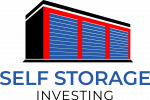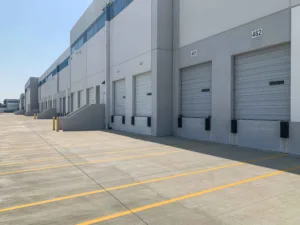When evaluating how much it costs to start a self storage business, you may be thinking about your expenses beyond operational costs. In order to be profitable, you must also have a pipeline to acquire new customers. This is why there is much emphasis on local digital marketing–after all, where are customers finding out about new businesses?
There are numerous strategies for attracting new customers online. At first glance, there’s an overwhelming amount of information to get started; should you start with SEO? Organic? Paid Ads? Social media? What exactly is the difference and where is the best place to get started?
Before diving into specific strategies, let’s understand why digital marketing is crucial for self storage investing:
- Visibility: With the majority of consumers searching for products and services online, having a strong online presence is essential.
- Local Targeting: Self storage customers are typically local. Digital marketing allows you to reach potential customers in your area effectively.
- Cost-Effective: Digital marketing often provides a more cost-effective way to reach your audience compared to traditional advertising methods.
Now, let’s explore the strategies:
1. Create an Informative Website
Your website is your digital storefront. Ensure it’s user-friendly and provides essential information about your self storage facilities including location, unit sizes, pricing, and contact details. Optimize it for mobile use as many users access websites via smartphones.
2. Utilize Search Engine Optimization (SEO)
SEO is the process of optimizing your website to rank higher in search engine results pages (SERPs). Here’s how to use SEO effectively:
- Keyword Research: Identify relevant keywords related to self storage in your locality. Tools like Google Keyword Planner can help.
- On-Page SEO: Ensure your website’s content, including headings, meta descriptions, and alt tags for images, is optimized for your chosen keywords.
- Local SEO: Create a Google My Business profile, optimize it with accurate business information, and encourage customers to leave reviews.
- Quality Content: Regularly update your website with quality content, such as blog posts on self storage tips, moving guides, or organization hacks.
3. Engage on Social Media Platforms
Social media is a powerful tool for connecting with your local community. Here’s how to use it effectively:
- Choose the Right Platforms: Focus on platforms that are popular among your target audience. Facebook, Instagram, and Twitter are good starting points.
- Consistent Posting: Regularly share updates, promotions, and engaging content. Use eye-catching visuals like photos and videos of your facilities.
- Engage with Followers: Respond to comments and messages promptly. Encourage user-generated content by sharing customer testimonials or photos of their storage units.
- Paid Advertising: Consider investing in paid advertising on platforms like Facebook to reach a wider local audience.
4. Email Marketing
Collect email addresses from your customers and website visitors. Use email marketing to send newsletters, promotions, and updates. Personalize your emails to make customers feel valued and engaged.
5. Online Directories and Reviews
List your business on local online directories like Yelp, Yellow Pages, and Bing Places for Business. Encourage satisfied customers to leave positive reviews on these platforms, as this can improve your local search rankings.
6. Google Ads
Consider running pay-per-click (PPC) advertising campaigns on Google Ads. These ads can appear at the top of Google’s search results for relevant keywords, including Google Maps results, ensuring your facility is visible to potential customers actively searching for storage solutions.
7. Content Marketing
Create informative and engaging content related to self storage on your website’s blog. This not only attracts visitors but also establishes your authority in the field. You’ll want to base your content around keywords you want to rank for. Consistency is key here–it can take 6 months to a year to start ranking highly for specific keywords. Consider the local competition for said keywords. There are a handful of keyword research tools like SEMRush which can help score keyword difficulty and competition.
8. Analyze and Adjust
Use analytics tools like Google Analytics and social media insights to track the performance of your digital marketing efforts. Monitor metrics such as website traffic, click-through rates, and conversion rates. Adjust your strategies based on the data to optimize your marketing campaigns continually.
Conclusion
In the self storage investing business, digital and social media marketing, coupled with effective SEO strategies, can be a game-changer. It allows you to connect with local customers, enhance your online visibility, and establish your facilities as the go-to choice for storage solutions. Remember that consistency, quality content, and a focus on local targeting are key to success in the digital marketing landscape. By leveraging these strategies, you can position your self storage investment business for growth and long-term success.





